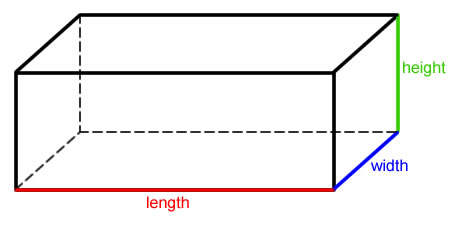


With our notation, it is a rectangle with sides l and w, so its area is l × w. Now, let's use that information to study the base of our prism. Recall that all the faces in our calculator are rectangles, and, as mentioned in the rectangle area calculator, they are calculated by multiplying the side lengths. Surface_area = 2 × base_area + lateral_area, Therefore, since the solid has two bases (the bottom one and the top one), the surface area of a rectangular prism formula is as follows: On the other hand, A_l denotes the lateral area, meaning the total area of the four lateral faces. Note that A_b denotes the surface area of a single base of our prism.
#A rectangular prism how to#
Time to put the high-brow words aside and focus on how to find the surface area of a rectangular prism. Lastly, the sides of each rectangle are called edges (again divided into base edges and lateral edges). The bottom and top faces of the box are called bases, and each of the other four is called a lateral face. Note that this, in particular, means that there are three pairs of identical faces placed on opposite sides of the solid.Īlso, as with any other scientific definition, there are a few fancy names associated with the prism. Well, that is a rectangular prism! Or do you remember those drawings of houses that we did in kindergarten? Remove the angular roof, and you're left with another example of a rectangular prism.įormally (mathematically), a right rectangular prism is a solid where all six sides are rectangles that are perpendicular to one another.
#A rectangular prism full#
A regular, rectangular box, just like the ones you see in the supermarket, full of whatever products. Before we see what the surface area of a rectangular prism is, we should get familiar with the prism itself.


 0 kommentar(er)
0 kommentar(er)
